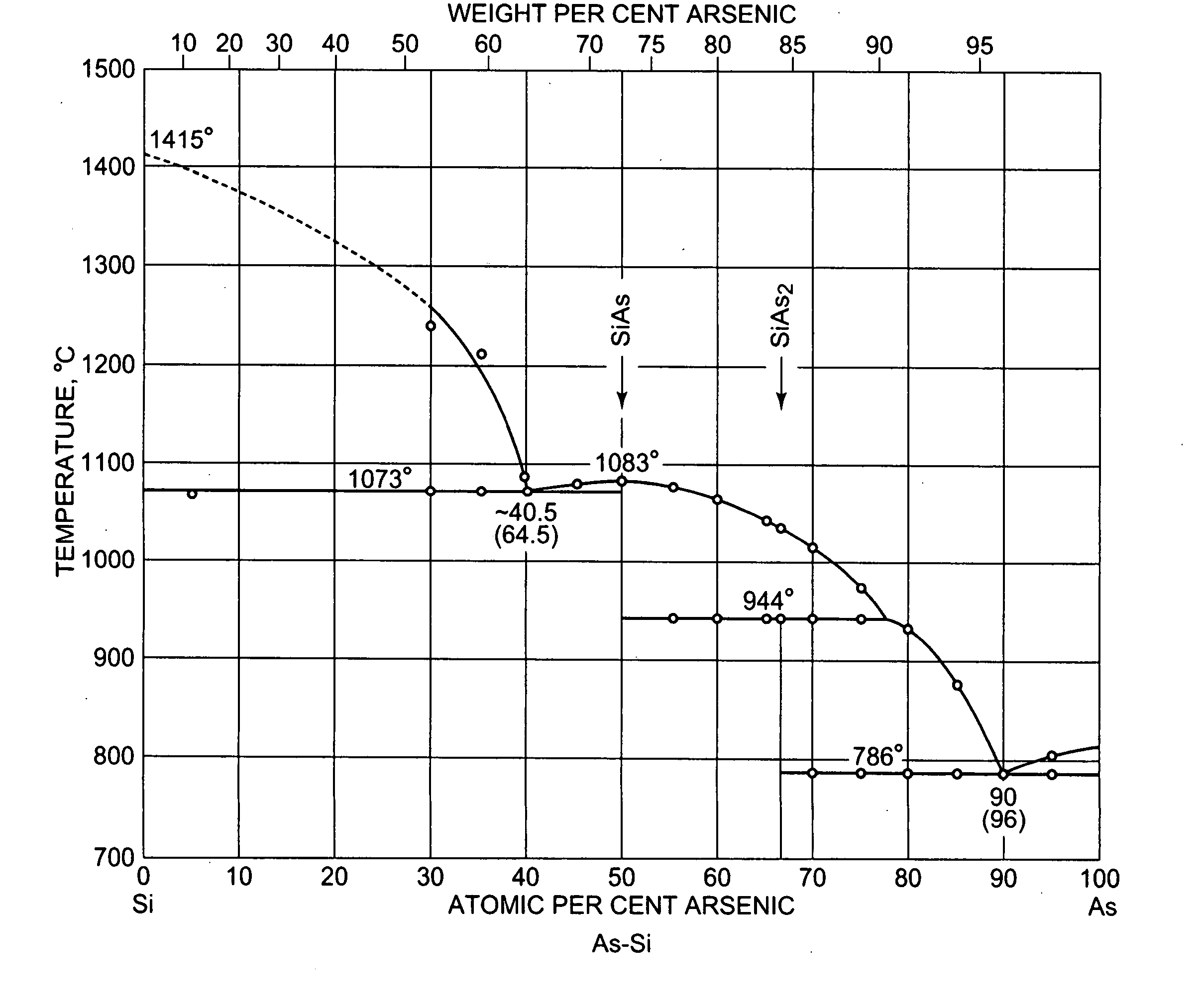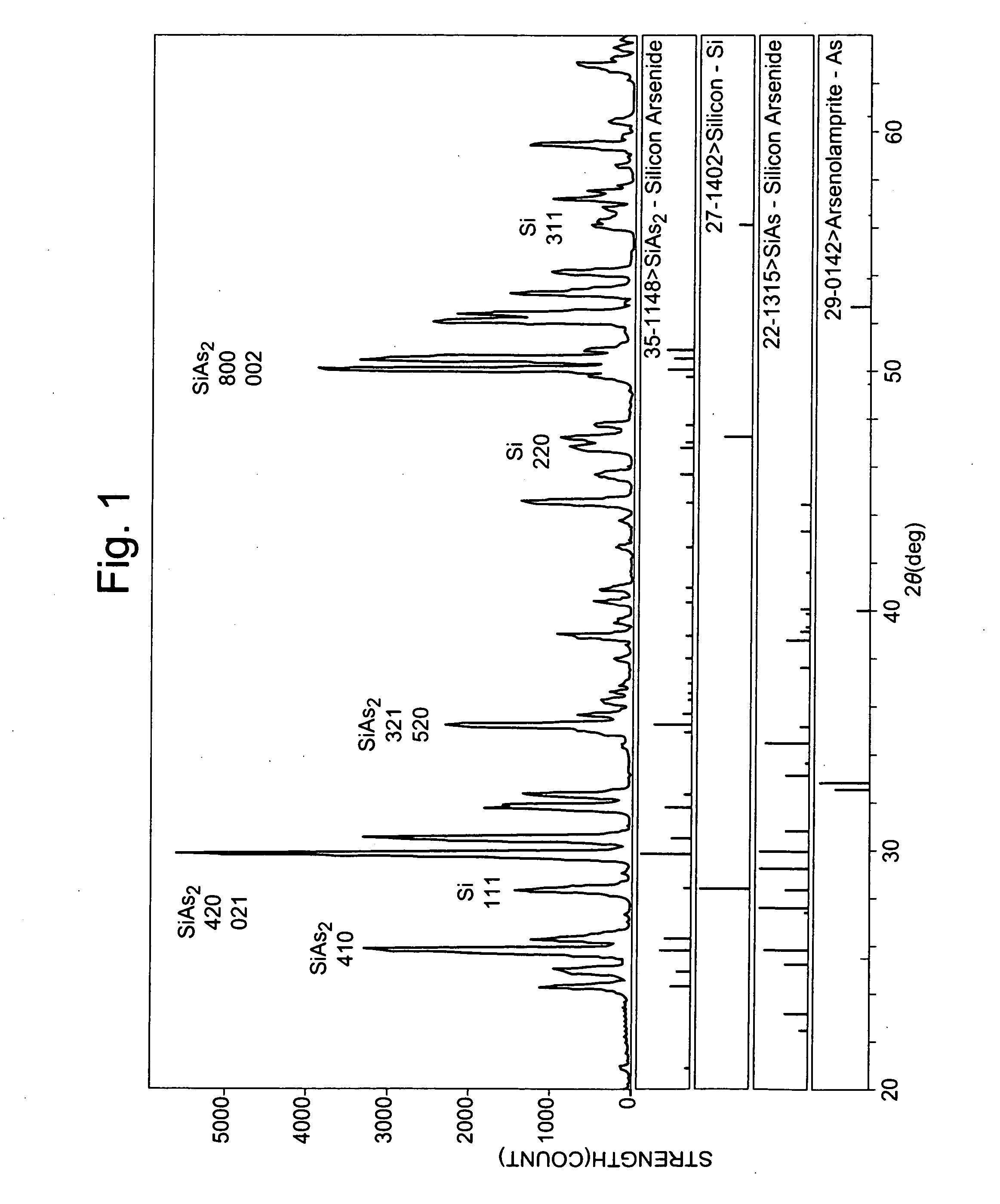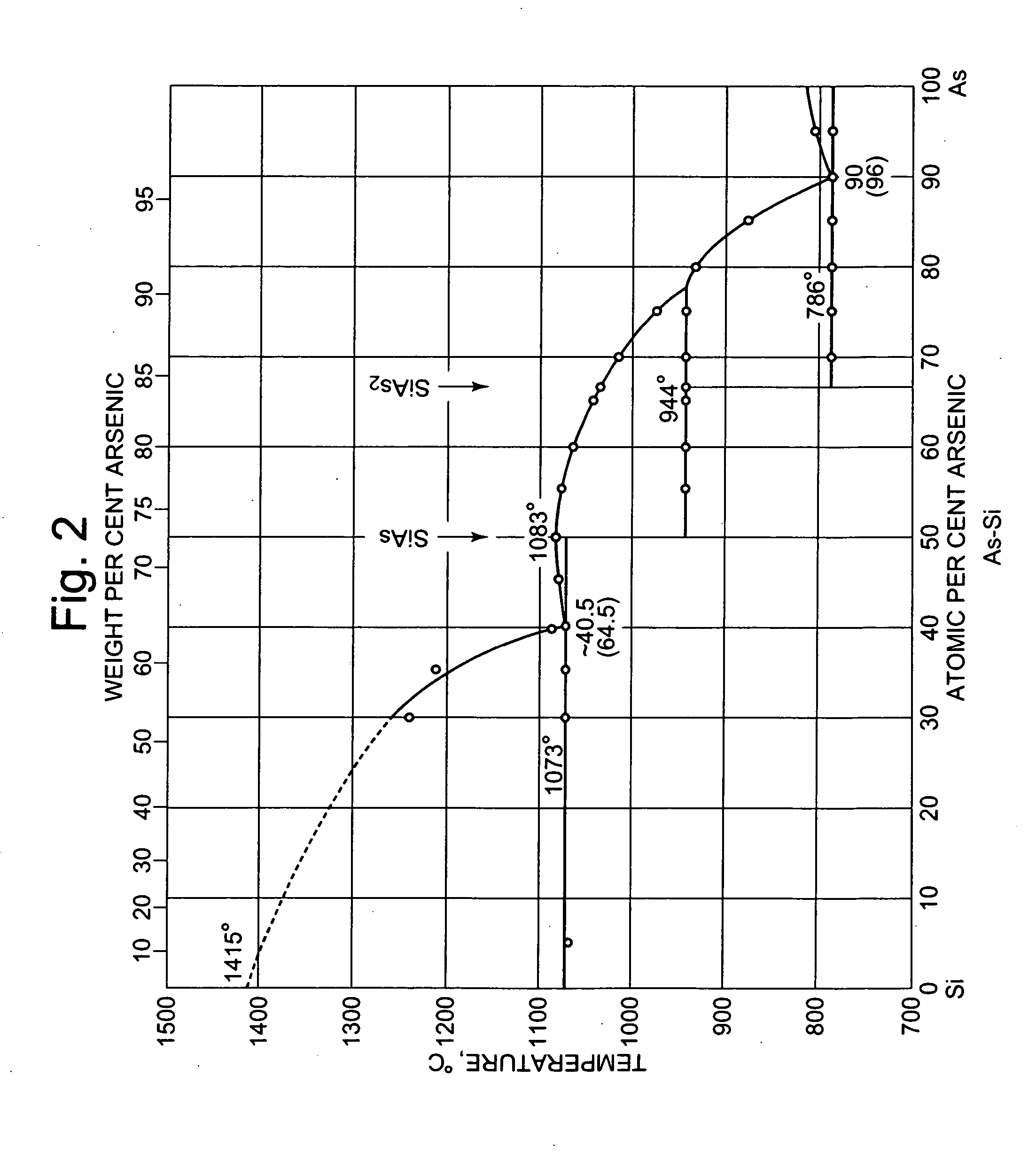Arsenic dopants for pulling of silicon single crystal, process for producing thereof and process for producing silicon single crystal using thereof
a technology of arsenic dopants and silicon single crystals, which is applied in the direction of polycrystalline material growth, chemistry apparatus and processes, crystal growth processes, etc., can solve the problems of difficult control of the operation of adding the dopant to a high concentration, limited use of phosphorus for and inability to reduce the resistivity of silicon single crystals. , to achieve the effect of reducing the resistivity of silicon single crystals
- Summary
- Abstract
- Description
- Claims
- Application Information
AI Technical Summary
Benefits of technology
Problems solved by technology
Method used
Image
Examples
examples
[0034] Powdery silicon (atomic weight: 28.09) was added to 100 g of granular arsenic (atomic weight: 79.92) with a grain diameter of 2 mm to molar ratios of 0% (Comparative Example 1), 25% (9.4 g: Comparative Example 2), 35% (13.1 g: Example 1), 45% (16.9 g: Example 2), 50% (18.75 g: Example 3), 55% (20.6 g: Example 4), 60% (22.5 g: Comparative Example 3) and the mixtures were held in vacuum in a hermetically sealed condition in respective quartz tubes and baked at 900° C. for seven days for a sintering reaction. Thus, As dopants of seven different types for pulling of silicon single crystal were obtained as a result of a sintering reaction.
[0035] The obtained As dopant for pulling of silicon single crystal of Example 3 was observed by means of an X-ray diffractometer (XRD) to identify the produced compound. As a result, a compound of SiAs2 and silicon, which is the sintering residue, were observed as shown in FIG. 1.
[0036] While there are two compounds of silicon arsenide includi...
PUM
| Property | Measurement | Unit |
|---|---|---|
| temperature | aaaaa | aaaaa |
| temperature | aaaaa | aaaaa |
| melting point | aaaaa | aaaaa |
Abstract
Description
Claims
Application Information
 Login to View More
Login to View More - R&D
- Intellectual Property
- Life Sciences
- Materials
- Tech Scout
- Unparalleled Data Quality
- Higher Quality Content
- 60% Fewer Hallucinations
Browse by: Latest US Patents, China's latest patents, Technical Efficacy Thesaurus, Application Domain, Technology Topic, Popular Technical Reports.
© 2025 PatSnap. All rights reserved.Legal|Privacy policy|Modern Slavery Act Transparency Statement|Sitemap|About US| Contact US: help@patsnap.com



